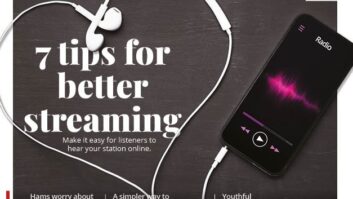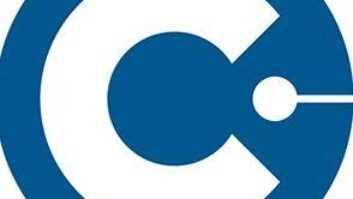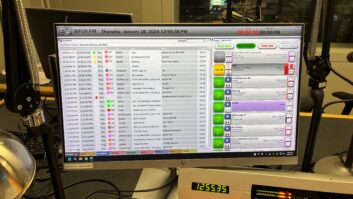IBOC Update � Jan 11, 2006
Jan 11, 2006 10:52 AM, By Mark Krieger, CBT
Stay up to date on the latest IBOC news, business and technology information with the twice-monthly newsletter from Radio magazine.
Index:
- Integrated Receivers Make the Scene at CES
- NRSC Defers on HD Radio “Expanded Band” Specification
- Motorola Touts iRadio at CES
- Worldspace Launching New Bird, New Brand
- Neural Marks Return to NPR, Arrival on XM
- Receiver Ports HD Radio into OEM Audio Systems
- HD Radio Training Tool Will Target Retailers
- IBOC by State: Idaho
- IBOC’s Identity Crisis
- An Introduction to the New Language Surrounding HD Radio
To receive these articles twice a month in your e-mail, subscribe to the IBOC Update – Insight on HD Radio e-newsletter. Click here to subscribe.NewsIntegrated Receivers Make the Scene at CES
Aftermarket car audio providers are telling consumer they can have it all, if new designs from Kenwood and JVC debuting at the Consumer Electronics Show are any barometer. Kenwood has joined Dice Electronics in exploiting embedded RDS scrolling text capacity now available in many OEM car radios as a way to provide convenient in-dash display for a range of car audio add-ons, such as Ipods, HD Radio and satellite receiver modules. The company’s KOS-A200 integration product includes a USB input, two stereo auxiliary analog inputs, a 5L disc changer input and IR eye input for the remote control. It is ready for HD Radio and Sirius when an external tuner is connected via the 5L input.For those wishing a complete bolt-in solution, JVC offers its new KD-HDR1, a CD and HD Radio tuner that is fully ready for satellite radio or Ipod, via the KS-PD100 adapter that allows Ipod connection, recharging and information display.JVC says it will ship its KD-HDR1 in spring at a $300 price point, while Kenwood’s KOS-A200 will retail for about $200 with availability this summer.NRSC Defers on HD Radio “Expanded Band” Specification
Members of the NRSC’s Digital Radio Subcommittee have declined a proposal by Cox Broadcasting that would have formalized a recommendation for an expanded band approach to displaying HD Radio multicast program channels on compatible receivers.Meeting at the Consumer Electronic Show in Las Vegas last week, members of the subcommittee voted against adoption of the Cox proposal, saying that such a decision was beyond the scope of a technical standards body.The Cox proposal was based on the findings of a study conducted by Bob Harper and Co. to determine whether consumers would prefer a layered, or nested, approach to listing multicasts under a primary station header (i.e., WXYZ HD 1, HD 2, etc.) or an expanded band approach (e.g., 108.1, 108.3, etc) that would treat each multicast channel as separate and unique entity. The findings of that study overwhelmingly suggested that consumers embraced the expanded band concept.The topic has been a mater of lively debate within the industry. One observer noted that a thumbs-down to the Cox proposal signals engineers serving on the technical-subcommittee to believe that such a decision ought to be made at the marketing level.BusinessWorldspace Launching New Bird, New Brand
Worldspace, a U.S.-based satellite radio provider to Africa and Asia has received authorization from the FCC to its Afristar-2 satellite. Now in storage on terra firma, AfriStar-2 is scheduled for insertion into geosynchronous orbit at 21� East Longitude. The satellite will be co-located with AfriStar-1, which has sufficient capacity to serve at least one linguistic market in Western Europe. Worldspace says Afri-Star-2 will allow it to expand its digital satellite radio services into Western Europe. It is also intended to serve as a replacement with respect to certain areas currently covered by AfriStar-1 when that satellite reaches the end of its operational life.The operating license had been a subject of contention on the part of Ondas of Spain, which objected to the license grant because it allowed Worldspace to expand its coverage into Europe, a market that it was not previously able to serve.But Worldspace claims it has priority rights to L band satellite radio allocations granted by the International Telecommunication Union (ITU) throughout Europe, the Middle East and Africa. The company plans to leverage that access by developing a new mobile receiver for distribution to consumers in the European market, enabling it to offer a variety of music, sports, news and talk radio programming to mobile and home subscribers throughout Western Europe.The announcement came just days before Worldspace’s introduction of a new global brand identity and logo. The company claims their “Turn on Your World” tagline is reflective of its “commitment to deliver a unique, personal global satellite radio experience to its current and future customers.”Neural Marks Return to NPR, Arrival on XM
For the second year running, National Public Radio (NPR) originated portions of its 12-hour New Year’s Eve Toast of the Nation special coast-to-coast broadcast using a mix produced and encoded in 5.1 surround sound using the Neural 5335 system. A number of NPR affiliates carried the broadcast via HD Radio.The special included a live feed from historic Tipitina’s Uptown Nightclub in New Orleans, marking the first live national music broadcast from New Orleans since Hurricane Katrina. The event featured several local musical artists who have not performed in their hometown since the category four storm devastated that city last September.The New Orleans segment was produced through a collaboration between NPR, WBGO Jazz 88/Newark, NJ, and the Tipitina’s Foundation, established to help New Orleans artists recover from Katrina and preserve the city’s cultural traditions. WBGO’s Rhonda Hamilton hosted the show from a specially built broadcast village at Tipitina’s, featuring live performances from Hot 8 Brass Band, funk band Galactic, and other local artists. New Orleans Venue Producer Mike Pappas used Neural Audio’s 5225 Down Mix to capture live musical content in 5.1 and downmix it for transmission to NPR headquarters in Washington, DC, where it was uplinked to an NPR audience worldwide. The broadcast will be featured in the February issue of Radio magazine.In a related story, XM Satellite Radio says it will offer select two of its music channels in 5.1 surround sound on an ongoing basis. Called XM HD Surround, the system will launch in March 2006 using the Neural 5.1 encoding system on its Fine Tuning and Pops music channels. The satcaster will also carry a variety of special shows and live music performances from its performance studios. Manufacturing partners including Denon, Onkyo, Pioneer and Yamaha plan to offer XM HD Surround capable home audio products in 2006.HD Radio Training Tool Will Target Retailers
If you’ve strolled into your local consumer retail outlet recently and asked to see HD Radio receiver or tuner products, chances are your request was received with befuddlement on the part of the firm’s sales associate. But a partnership between Ibiquity Digital and Creative Channel Services (CCS) looks to alleviate HD Radio’s knowledge gap among retailers by launching a free online learning tool called HD Radio University.CSS created the website training tool at Ibiquity’s request with the goal of reaching as many as 90,000 retail sales agents in more than 7,000 stores nationwide, including outlets such as Best Buy, Comp USA, Staples and Circuit City. According to CSS President Andy Restivo, large retail groups routinely rely on CSS’ Cyberscholar training program to keep their sales staffs up to date with a torrent of consumer new tech products.”Working with Cyberscholar, we’ve designed a flexible program that can train both large, professional staffs at national retail chains and individuals at specialty dealers,” said Bernie Sapienza, vice president of Ibiquity retail business development. “Since it’s important that we have a scalable program that can grow with us as quickly as the nation’s broadcasters are rolling out new HD Radio content, Cyberscholar is the obvious partner because it’s the training tool approved by most of the major retail outlets.Two levels of achievement will be available to trainees. An Associate’s Degree will be awarded after a 20 minute training and testing regimen. An additional tier of training and testing will yield a Bachelor’s Degree, while a third 20-minute tier may be added later this year to create a Master’s Degree level that incorporates a more technically in-depth look at HD Radio.ProductsReceiver Ports HD Radio into OEM Audio Systems
In news from the floor at the Consumer Electronics Show, Ibiquity Digital is developing a reference design for a universal tuner box that will plug-and-play with satellite-ready OEM auto audio head units without the need for any other special antennas or accessories.The new design will allow simple installation of one box that will permit reception of IBOC digital AM and FM, including FM digital multicast signals, through factory equipped car audio systems. The HD Radio tuner box will be compatible with factory-installed receivers–including those from Chrysler, Ford and GM–and aftermarket receivers from companies such as Panasonic, Kenwood, Alpine, Pioneer and Sony.Motorola Touts Iradio at CES
Motorola has jumped on the convergence bandwagon with its Iradio product, a subscription music service that ports podcast-style audio files from the Internet to your car stereo or wireless headphones via the company’s wireless handsets, Windows based software and a Bluetooth adapter.Promoting its latest foray into electronic media at last weeks Consumer Electronics Show, Motorola says it will launch Iradio with 435 commercial-free radio channels that will allow consumers to tailor their listening and music purchasing. The system relies on a consumer’s broadband-equipped PC to aggregate programming downloads from the Iradio Internet site then uploads those files to the consumer’s Motorola handset via Bluetooth wireless connectivity. At that point, the listener can listen to the stored content streams directly through a headset connected to the phone, or through their car audio system via Bluetooth audio adapter kit that must be installed in the consumer’s vehicle.The advantage of Iradio, claims Motorola, is the customized software that makes it possible for consumers to tag and purchase music titles carried on the services multiple program services.Creating the content for the Motorola system are media veterans like Clear Channel Radio and Music Choice. Warner Music Group and Universal Music Group have also announced their intention to feature their artists via Iradio. The company also plans individual artist channels, specialty channels and channels created by notable individuals under the moniker “Get Heard Network.”IBOC Across AmericaIBOC By State: Idaho
Ibiquity has a list of stations that have licensed HD Radio technology and notes those that are on the air now. IBOC by state will look at various states and list the stations that are making the transition.Station Format Market Owner On Air Multicasting KBSU-AM 730 Jazz Boise, ID Boise State University No No KBSU-FM 90.3 Classical Boise, ID Boise State University No No KBSX-FM 91.5 NPR/Talk Boise, ID Boise State University No No KBSS-FM 91.1 NPR/Talk Sun Valley, ID Boise State University Yes No KWRV-FM 91.9 Classical Sun Valley, ID Minnesota Public Radio No NoEye on IBOCIBOC’s Identity Crisis
As broadcasters continue HD Radio’s roll-out nationwide, it has become painfully apparent that the technology remains under publicized or misunderstood by public and private sectors. An interesting example arrived this week in the form of a technology forecast from Kagen Research entitled “Broadcast Investors: Deals and Finance.” To its credit, a synopsis of the full report (not reviewed) suggests that HD Radio may facilitate four business models for broadcasters: - Multicasting using a conventional approach of selling airtime on each channel
- Multicasting with a premium channel subscription approach
- Multicasting with niche information channels (i.e., sports, business news, traffic)
- Leasing additional data capacity to third parties
So far, so good. But the summary given of how HD Radio’s bandwidth might be allocated gives one pause, because it describes the bandwidth the digital signal will afford, and how a broadcaster could use “…each block of 150kb/s of digital capacity. The analog broadcaster could allocate 55kb/s for an HD version of its flagship analog music channel, 55kb/s for a new companion music channel, 12kb/s for a Now channel, 8kb/s for datacasting and 2kb/s for a subscription channel for a local traffic report channel. That would leave 18kb/s available for later uses.”Now, are we talking about hybrid HD Radio? Extended hybrid? Does this apply to all HD Radio broadcasters, FM and AM? For someone with a radio engineering background who regularly follows the progress of IBOC digital radio development in the United States, it’s relatively easy to sort things out. But for someone outside that small circle, such articles may create dangerous misconceptions and false expectations.To its credit, Ibiquity has opened a new front in the campaign to inform America about HD Radio’s latest digital iteration with its announcement of an online HD Radio University for retailers. And retaining Kermish-Geylin Public Relations to handle its communications with the auto industry, a linchpin of the HD marketing puzzle, is also a positive step. But these are just the opening salvos in what needs to be a D-Day like effort to remake consumer and corporate conceptions of radio’s potential in the 21st century.HD Radio Terminology An introduction into the language surrounding IBOC.all-digital waveform: A transmitted waveform for modes composed entirely of digitally modulated subcarriers without an analog signal.interleaving process: A series of manipulations performed on one or more coded transfer frames (vectors) to reorder their bits into one or more interleaver matrices whose contents are destined for a particular portion of the transmitted spectrum.












